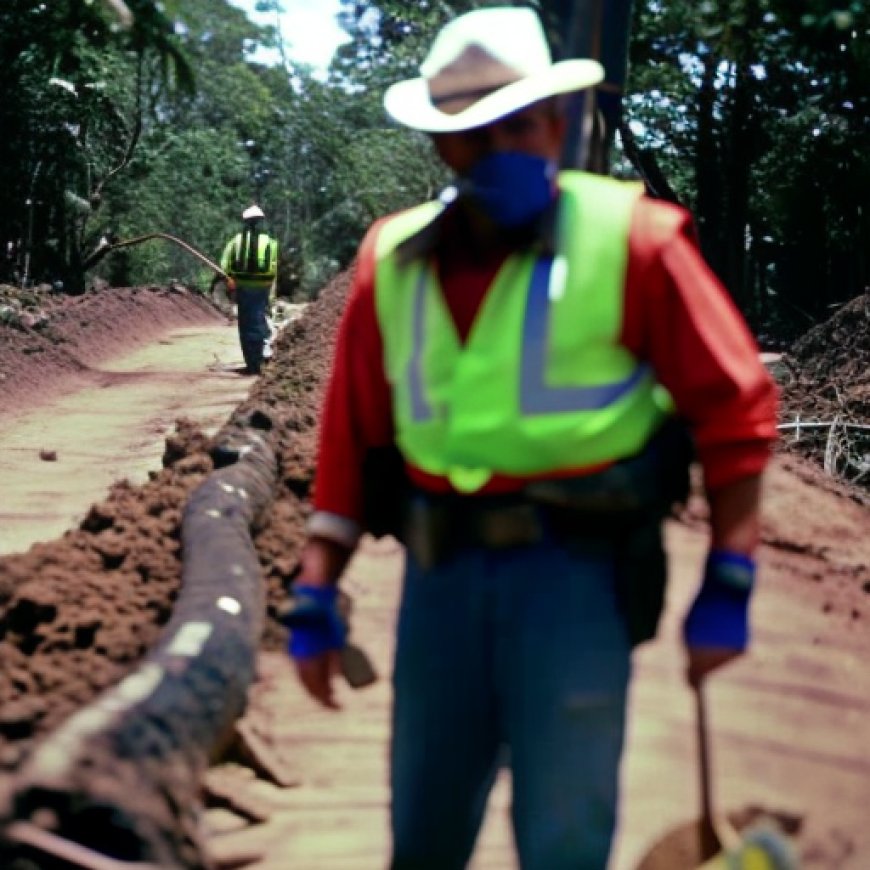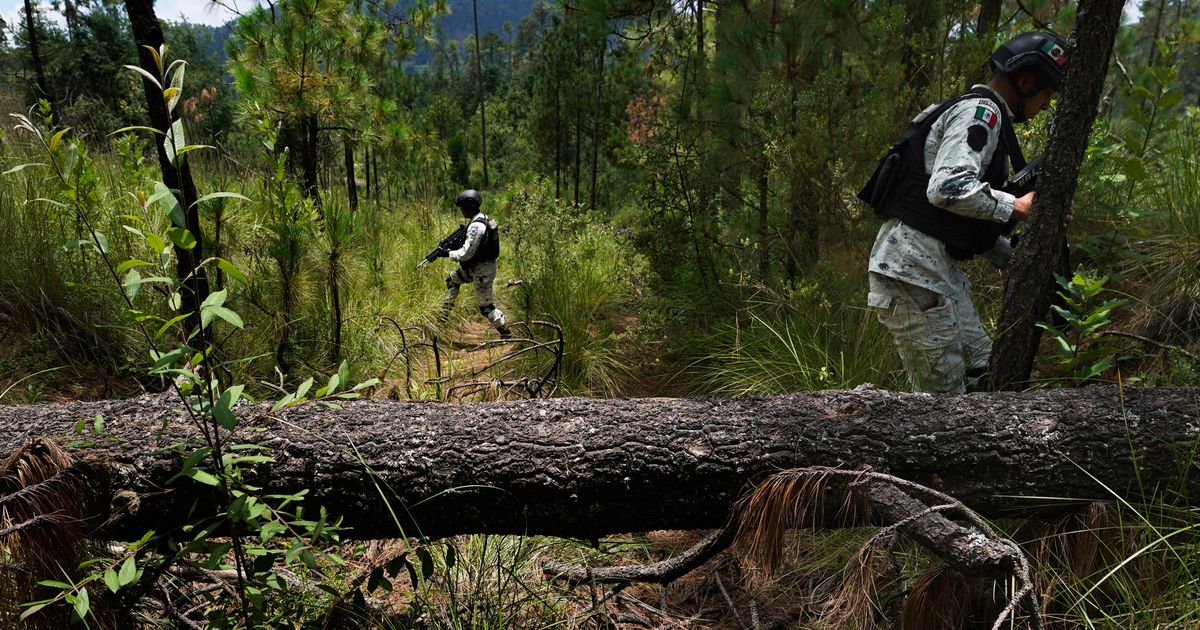Illegal logging thrives in Mexico City’s forest-covered boroughs, as locals strive to plant trees
Illegal logging thrives in Mexico City’s forest-covered boroughs, as locals strive to plant trees The Seattle Times


Mexico City Faces Illegal Logging Crisis

Illegal logging has taken a huge toll in recent years on the forest-covered southern half of Mexico City, a region that most people outside of Mexico are unaware of. This crisis threatens the Sustainable Development Goals (SDGs) related to environmental sustainability and the well-being of local communities.
The Impact of Illegal Logging
The extent of the devastation caused by illegal logging is astonishing. Forests that were once abundant with trees have been decimated, leaving behind a barren landscape. The loss of these forests has significant consequences for the environment and the people who depend on them.
- The forests play a crucial role in recharging aquifers that supply water to nearly 20 million people in Mexico City and its suburbs.
- They help clean the polluted air of the city, contributing to improved air quality.
- Forests also serve as a natural barrier against high temperatures, helping to mitigate the effects of climate change.
However, the illegal cutting of trees has accelerated rapidly in recent years, threatening these vital ecosystem services.
Causes and Consequences
The reasons behind the surge in illegal logging are multifaceted and complex. Local farm communities, many of whom work as park rangers or soil conservation workers, believe that organized crime groups have infiltrated the illegal logging business. These criminal organizations have historically used rural communities on the outskirts of Mexico City for various illicit activities, including kidnapping and disposing of bodies.
Another contributing factor may be the federal government’s crackdown on the sale of contraband fuel stolen from government pipelines. Some villagers speculate that individuals who previously made a living selling fuel may have turned to illegal logging as an alternative source of income.
Mexico City authorities have taken action against illegal logging, identifying criminal groups involved and conducting raids on clandestine sawmills in the mountains. The city also sponsors reforestation efforts to combat the loss of forests. However, time is running out, as it would take decades to replace the mature forests that have been cut down.
The Magnitude of the Problem
According to Global Forest Watch, in 2010, forests covered about 100,000 acres (40,500 hectares) of Mexico City’s total area. However, the city lost 121 acres (49 hectares) of forest in 2022 alone, equivalent to the combined loss of the previous four years. The situation is particularly dire in San Miguel Topilejo, where approximately 6,000 acres (2,400 hectares) of forest have been fully or partially cut.
The Challenges of Combating Illegal Loggers
Efforts to combat illegal loggers face numerous challenges. Data from the country’s attorney general for environmental protection reveals that there have been 122 illegal logging complaints in Mexico City since 2013, with more than half occurring in 2023.
Forest rangers and volunteers engaged in reforestation missions face significant risks. They are often accompanied by soldiers and armed officers of the National Guard for protection. However, illegal loggers are heavily armed and have attacked rangers and even soldiers. The situation is further exacerbated by the fact that Mexico is the world’s deadliest place for environmental and land defense activists, with 54 activists killed in 2021 alone.
Addressing the Crisis
Mexico City’s environment department acknowledges that the causes of illegal logging are diverse, ranging from real estate interests to organized crime. To address this crisis, authorities have conducted raids on illegal sawmills and lumber yards, seizing numerous sites involved in illegal logging. However, tougher penalties and improved law enforcement are needed to effectively combat this issue.
It is crucial to prioritize the Sustainable Development Goals (SDGs) throughout these efforts. Protecting forests aligns with SDG 15 (Life on Land), which aims to sustainably manage forests, combat desertification, halt biodiversity loss, and promote the restoration of degraded land. Additionally, SDG 6 (Clean Water and Sanitation) emphasizes the importance of protecting water sources, such as aquifers replenished by forests.
As Mexico City continues to grapple with the illegal logging crisis, urgent action is required to protect its remaining forests and ensure the well-being of its communities.
Conclusion
The illegal logging crisis in Mexico City poses a significant threat to the environment and the livelihoods of local communities. The loss of forests not only impacts water supply and air quality but also exacerbates the effects of climate change. It is essential to address the underlying causes of illegal logging, including organized crime and socioeconomic factors, while also implementing stricter penalties and improving law enforcement. By prioritizing the Sustainable Development Goals (SDGs), Mexico City can work towards a more sustainable and resilient future.
Follow AP’s climate coverage at: https://apnews.com/hub/climate-and-environment
Author: Maria Verza
SDGs, Targets, and Indicators
1. Which SDGs are addressed or connected to the issues highlighted in the article?
- SDG 15: Life on Land – Protect, restore, and promote sustainable use of terrestrial ecosystems, sustainably manage forests, combat desertification, and halt and reverse land degradation and halt biodiversity loss.
- SDG 13: Climate Action – Take urgent action to combat climate change and its impacts.
- SDG 16: Peace, Justice, and Strong Institutions – Promote peaceful and inclusive societies for sustainable development, provide access to justice for all, and build effective, accountable, and inclusive institutions at all levels.
2. What specific targets under those SDGs can be identified based on the article’s content?
- Target 15.2: By 2020, promote the implementation of sustainable management of all types of forests, halt deforestation, restore degraded forests, and substantially increase afforestation and reforestation globally.
- Target 13.2: Integrate climate change measures into national policies, strategies, and planning.
- Target 16.7: Ensure responsive, inclusive, participatory, and representative decision-making at all levels.
3. Are there any indicators mentioned or implied in the article that can be used to measure progress towards the identified targets?
- Indicator for Target 15.2: Forest area as a proportion of total land area.
- Indicator for Target 13.2: Number of countries that have communicated their first nationally determined contributions.
- Indicator for Target 16.7: Proportions of positions in public institutions (national and local legislatures, public service, and judiciary) compared to national distributions.
Table: SDGs, Targets, and Indicators
| SDGs | Targets | Indicators |
|---|---|---|
| SDG 15: Life on Land | Target 15.2: By 2020, promote the implementation of sustainable management of all types of forests, halt deforestation, restore degraded forests, and substantially increase afforestation and reforestation globally. | Indicator: Forest area as a proportion of total land area. |
| SDG 13: Climate Action | Target 13.2: Integrate climate change measures into national policies, strategies, and planning. | Indicator: Number of countries that have communicated their first nationally determined contributions. |
| SDG 16: Peace, Justice, and Strong Institutions | Target 16.7: Ensure responsive, inclusive, participatory, and representative decision-making at all levels. | Indicator: Proportions of positions in public institutions (national and local legislatures, public service, and judiciary) compared to national distributions. |
The issues highlighted in the article are connected to SDGs 15, 13, and 16. SDG 15 focuses on protecting terrestrial ecosystems, managing forests sustainably, and combating land degradation. SDG 13 addresses the need for climate action. SDG 16 emphasizes the importance of inclusive decision-making and strong institutions.
Based on the article’s content, specific targets under these SDGs can be identified. Target 15.2 aims to promote sustainable forest management, halt deforestation, restore degraded forests, and increase afforestation and reforestation. Target 13.2 calls for integrating climate change measures into national policies and planning. Target 16.7 focuses on ensuring inclusive and participatory decision-making.
The article mentions indicators that can be used to measure progress towards these targets. The indicator for Target 15.2 is the forest area as a proportion of total land area. For Target 13.2, the indicator is the number of countries that have communicated their first nationally determined contributions. The indicator for Target 16.7 is the proportions of positions in public institutions compared to national distributions.
Behold! This splendid article springs forth from the wellspring of knowledge, shaped by a wondrous proprietary AI technology that delved into a vast ocean of data, illuminating the path towards the Sustainable Development Goals. Remember that all rights are reserved by SDG Investors LLC, empowering us to champion progress together.
Source: seattletimes.com

Join us, as fellow seekers of change, on a transformative journey at https://sdgtalks.ai/welcome, where you can become a member and actively contribute to shaping a brighter future.







